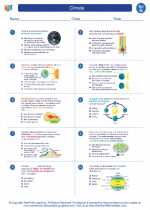Regulatory Systems
Regulatory systems are mechanisms in living organisms that control and coordinate the activities of the body to maintain homeostasis. These systems monitor internal and external conditions and make adjustments to ensure that the body functions within a narrow range of conditions, such as temperature, pH, and nutrient levels.
Nervous System
The nervous system is a complex network of nerves and cells that transmit signals between different parts of the body. It is responsible for coordinating voluntary and involuntary actions and responses to stimuli. The nervous system consists of the central nervous system (brain and spinal cord) and the peripheral nervous system (nerves outside the central nervous system).
Endocrine System
The endocrine system consists of glands that produce and secrete hormones, which are chemical messengers that regulate various bodily functions such as growth, metabolism, and reproduction. The endocrine system helps to maintain homeostasis by responding to changes in the internal environment and coordinating the body's response to stress, injury, or other stimuli.
Study Guide
- What are regulatory systems in living organisms?
- Describe the nervous system and its components.
- Explain the role of the endocrine system in maintaining homeostasis.
- Compare and contrast the nervous and endocrine systems in terms of their mechanisms of control and coordination.
- Provide examples of how regulatory systems respond to internal and external stimuli to maintain homeostasis.
Understanding regulatory systems is essential for comprehending how living organisms maintain balance and respond to changes in their environment. Be sure to review the functions and interactions of the nervous and endocrine systems to grasp their importance in controlling and coordinating bodily activities.
.









